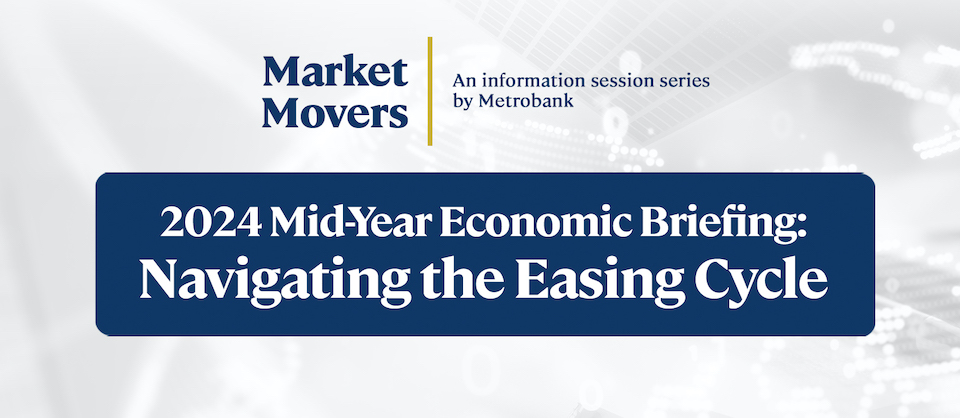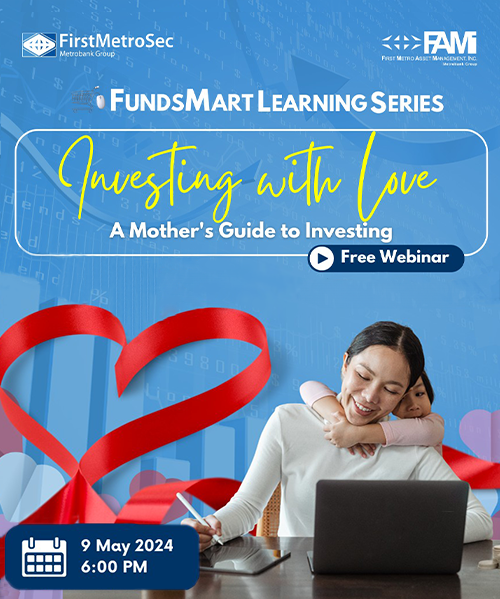Archives: CreditSights Issuer List
Access this content:
If you are an existing investor, log in first to your Metrobank Wealth Manager account.
If you wish to start your wealth journey with us, click the “How To Sign Up” button.

Country Overview
AS OF 19 Aug 2025- Hydrocarbon-driven economy: Qatar’s economy is primarily fueled by its vast reserves of oil and natural gas. As the world’s largest exporter of liquefied natural gas (LNG), the country’s economic health and government revenues are highly dependent on global energy prices. This resource has endowed Qatar with one of the world’s highest per capita incomes and significant fiscal strength.
- Vision for diversification: Under its Qatar National Vision 2030, the country is actively working to reduce its reliance on hydrocarbons. The government is investing heavily in developing a knowledge-based economy and promoting sectors like finance, logistics, and tourism to create more sustainable and diversified growth.
- Robust Fiscal Position: Due to high energy prices, Qatar has consistently maintained substantial fiscal and current account surpluses. These surpluses have allowed the government to build significant financial reserves and sovereign wealth, providing a strong economic buffer against external shocks and funding major infrastructure projects.
Macro Fundamentals
AS OF 19 Aug 2025- Pegged currency and monetary policy. The Qatari riyal is pegged to the US dollar, which means the Qatar Central Bank's monetary policy decisions are closely linked to those of the US Federal Reserve. This policy provides a stable exchange rate and helps anchor inflation expectations.
- Strong twin surpluses. Qatar’s external position is exceptionally strong, characterized by persistent and large current account and fiscal surpluses. While these surpluses have moderated from their 2022 peaks as energy prices have stabilized, they are projected to remain in positive territory, ensuring financial stability.
- Significant public and private investment. Both public and private sectors are focused on large-scale infrastructure and development projects. Key investments, such as the massive North Field East LNG expansion and continued growth in the services sector (particularly post-World Cup), are central to the country's economic strategy.
CreditSight View Comment
AS OF 28 Nov 2025Recommendation Reviewed:
Recommendation Changed:
Featured Issuers
Bank of Philippine Islands

SK Hynix

Hyundai Motor



How may we help you?
Search topics about wealth insights and investments.Access this content:
If you are an existing investor, log in first to your Metrobank Wealth Manager account.
If you wish to start your wealth journey with us, click the “How To Sign Up” button.

Fundamental View
AS OF 13 Aug 2025While Meta is executing strongly from a product perspective, we are concerned by its surging AI investments and regulatory risks. Meta acquired a 49% stake in Scale AI for $14 bn in 2Q25. The company expects capex to have “similarly significant” dollar growth in 2026; this implies it could be ~$100 bn or ~45% of sales in 2026.
There are also concerns on the regulatory front. We could potentially see a ruling in the next several months from the FTC suit which is seeking to unwind prior acquisitions of Instagram and WhatsApp. In addition, the EC’s DMA decision could require modifications that impact its European revenue. Gross leverage is 0.3x although net cash declined sharply to $18.2 bn in 2Q25. We also think Meta could be in the market fairly soon with a jumbo bond deal.
Business Description
AS OF 13 Aug 2025- Meta Platforms is the largest social networking company in the world. Meta's advertising revenue is primiarly from Facebook and Instagram, although also on Messenger, Whatsapp, Threads, and third-party affiliated websites and apps.
- In 2Q25, Family of Apps was 99% of revenue (98.0% from advertising and 1.2% from other) and Reality Labs was 1% of revenue. Reality Labs generated $18.1 bn in operating losses during LTM 2Q25.
- There are 3.48 bn Family Daily Active People (DAP) as of 2Q25, and the Family Average Revenue per Person (ARPP) was $13.65 quarterly in 2Q25.
- Meta is headquartered in Menlo Park, California. Employee headcount was >75.9k at 2Q25.
Risk & Catalysts
AS OF 13 Aug 2025In December 2020, the FTC filed a lawsuit against Meta seeking to unwind prior acquisitions of Instagram and Whatsapp.
Meta’s business model relies almost entirely on user-generated content, exposing it to customer privacy concerns and regulatory changes (e.g., Section 230 protections).
Surging capex for AI and continued investments in Reality Labs could weaken the balance sheet although Meta has reportedly raised $29 bn in external financing from PIMCO and Blue Owl for its Louisiana data center project.
We continue to expect Meta to be a regular/annual issuer to fund its shareholder returns and massive investments.
A potential ban of TikTok (extended through 9/17/2025) would positively impact Meta and others with short-form video products.
Key Metric
AS OF 13 Aug 2025| $ mn | 2021 | 2022 | 2023 | 2024 | LTM 2Q25 |
|---|---|---|---|---|---|
| Revenue YoY % | 37.2% | (1.1%) | 15.7% | 21.9% | 19.4% |
| EBITDA | 63,882 | 49,622 | 71,955 | 101,568 | 112,933 |
| EBITDA Margin | 54.2% | 42.6% | 53.3% | 61.7% | 63.2% |
| CapEx % of Sales | 16.3% | 27.5% | 20.8% | 23.8% | 30.6% |
| Sh. Ret. % of CFO-CapEx | 116% | 152% | 46% | 68% | 78% |
| Net Debt | (47,998) | (30,815) | (47,018) | (48,989) | (18,239) |
| Gross Leverage | 0.0x | 0.2x | 0.3x | 0.3x | 0.3x |
| EV / EBITDA | 14.0x | 5.8x | 12.3x | 14.5x | 16.6x |
CreditSight View Comment
AS OF 18 Nov 2025Meta delivered strong revenue growth in its 3Q25 results and 4Q25 guidance, which were both above consensus expectations. However, total expenses are now expected to grow “significantly” faster in 2026 relative to the 22-24% YoY implied growth in 2025. Also, capex will have “notably larger” dollar growth in 2026. We estimate this could imply $115-120 capex or ~50% of sales in 2026. As a result, we think FCF could be slightly negative in 2026. Meta just launched $30 bn IG bonds which is on the heels of the recent $27 bn off balance sheet Meta JV bond deal. Pro forma for $30 bn issuance, gross leverage is 0.5x (0.2x at 3Q25) and lease-adjusted leverage is 0.7x (0.4x at 3Q25). Net cash was $15.6 bn at 3Q25. Meta recently prevailed in the FTC’s monopoly litigation.
Recommendation Reviewed: November 18, 2025
Recommendation Changed: July 31, 2025
Featured Issuers
Bank of Philippine Islands

SK Hynix

Hyundai Motor



How may we help you?
Search topics about wealth insights and investments.Access this content:
If you are an existing investor, log in first to your Metrobank Wealth Manager account.
If you wish to start your wealth journey with us, click the “How To Sign Up” button.

Fundamental View
AS OF 13 Aug 2025- We continue to have confidence in CEO Andy Jassy and the company’s long-term business for both AWS and Stores. While the AWS growth rate is below peers, it is a $123 bn run-rate business with high-teens growth and operating margins in the 30s%. We continue to believe that Amazon will be a winner in Generative AI given the breadth of its cloud business, custom silicon (Trainium, Inferentia), and Bedrock platform.
- Leverage declined slightly to 0.4x gross and 0.9x lease-adjusted gross. While Amazon’s capex has been ramping, along with other hyperscalers, we are encouraged by its debt reduction over the past few years and zero shareholder returns. Also, Amazon’s market cap is $2.4 tn. There are risks related to the FTC suit although we view a breakup as unlikely.
Business Description
AS OF 13 Aug 2025- Amazon is an e-commerce company which sells a wide range of its own products and those of 3rd party sellers. Amazon offers fulfillment services for 3rd party sellers (FBA) and sells cloud computing services (AWS). In 2Q25, 3rd party units were 62% of total paid units, and FBA units are a majority of 3rd party units.
- In LTM 2Q25, NA segment was 60% of sales, International was 22% of sales, and AWS was 17% of sales.
- Amazon disclosed it surpassed 200 mn Prime members in April 2021. The annual membership was increased in February 2022 from $119 to $139 in the US, although fees vary by country. In mid-2019, Amazon Prime began to transition from 2-day to 1-day shipping. Amazon Prime also offers Prime Video, streaming music, and other benefits.
- In 2006, Amazon launched AWS which remains the leader in cloud computing (IaaS/PaaS). Amazon sells its own devices (e-reader, smart speaker, streaming media player, etc.).
Risk & Catalysts
AS OF 13 Aug 2025- We think Amazon has moderate event risk given its large size (~$2.4 tn market cap).
- While Amazon is increasing its Capex spend, we are encouraged by the ~$19.6 bn reduction in lease-adjusted debt from its peak in 1Q23 through 2Q25.
- Amazon continues to face regulatory scrutiny. In September 2023, the FTC and 17 states filed a lawsuit against Amazon and accused the company of (1) punishing sellers for offering lower prices elsewhere and (2) making Prime eligibility conditional on usage of fulfillment services. The biggest risk would be a breakup, although we view that as unlikely.
- Amazon’s $14 bn acquisition of Whole Foods has shown its proclivity for large M&A, although the regulatory environment could make large deals challenging.
Key Metric
AS OF 13 Aug 2025| $ mn | 2020 | 2021 | 2022 | 2023 | 2024 | LTM 2Q25 |
|---|---|---|---|---|---|---|
| Revenue YoY % | 37.6% | 21.7% | 9.4% | 11.8% | 11.0% | 10.9% |
| EBITDA | 57,284 | 71,994 | 74,593 | 110,305 | 144,162 | 156,248 |
| EBITDA Margin | 14.8% | 15.3% | 14.5% | 19.2% | 22.6% | 23.3% |
| CapEx % of Sales | 12.1% | 13.3% | 11.5% | 8.5% | 12.3% | 15.6% |
| Sh. Ret. % of CFO-CapEx | 0% | 0% | n/m | 0% | 0% | 0% |
| Net Debt | (50,497) | (44,453) | 8,516 | (19,451) | (43,051) | (36,925) |
| Gross Leverage | 0.6x | 0.7x | 1.1x | 0.6x | 0.4x | 0.4x |
| EV / EBITDA | 28.3x | 23.3x | 11.7x | 14.4x | 16.1x | 14.9x |
CreditSight View Comment
AS OF 17 Nov 2025We continue to have confidence in CEO Andy Jassy and the long-term business for AWS and Stores. AWS is a $132 bn run-rate business growing at 20% with GAAP OM% in the 30s%. The 3Q25 results and commentary supports our view that Amazon will be a winner in Generative AI given the breadth of its cloud business, custom silicon (Trainium), and Bedrock service. While AMZN’s capex has been ramping, along with other hyperscalers, we are encouraged by its debt reduction over the past few years and zero shareholder returns. There are risks related to its ongoing FTC suit (not the one that was recently settled on Prime subscriptions) although we view a breakup as unlikely. Pro forma for $15 bn issuance and $1.25 bn upcoming maturity, gross lease-adjusted leverage will increase by one tick to 1.0x.
Recommendation Reviewed: November 17, 2025
Recommendation Changed: May 01, 2024
Featured Issuers
Bank of Philippine Islands

SK Hynix

Hyundai Motor



How may we help you?
Search topics about wealth insights and investments.Access this content:
If you are an existing investor, log in first to your Metrobank Wealth Manager account.
If you wish to start your wealth journey with us, click the “How To Sign Up” button.

Fundamental View
AS OF 13 Aug 2025BMO is geographically diversified within Canada & via its commercial banking business in the U.S. and is also well-diversified by revenue with contribution from fee income businesses.
Credit has performed worse than peers in 2024, but losses have stabilized in 2025, based on underwriting and risk management changes in recent years as well as seasoning effects.
Business Description
AS OF 13 Aug 2025- BMO Financial Group is the third largest depository institution in Canada with C$1.44 tn in assets as of F2Q25 and a market capitalization of US$77 bn. Total deposits were C$958 bn at F2Q25.
- BMO operates 1,890 branches in Canada and the United States in 2024.
- As of YE24, BMO had 1,013 branches within the United States, mostly in the Midwest. BMO ranked 11th in deposit market share in the U.S. (SNL), with a top-2 share in Illinois.
Risk & Catalysts
AS OF 13 Aug 2025BMO has a strong core deposit base in Canada and in the U.S., which mitigates the potential for a liquidity event. BMO remains well-capitalized relative to requirements with a target CET1 ratio of 12.5% (13.5% at F2Q25).
BMO closed the acquisition of Bank of the West from BNP Paribas in February 2023, significantly expanding its footprint in the U.S. We don’t expect deal integration to have much impact on the credit profile.
We view real estate-related risk in Canada as manageable for BMO given low LTV of exposures in vulnerable markets and conservative underwriting. Commercial real estate accounts for ~10% of total loans, and office is quite manageable at ~1% of total.
Credit trends have largely stabilized in 1H25, while provisions could incrementally increase in 2H25 in light of current macro uncertainties.
BMO’s reserves and capital levels all point to BMO maintaining a conservative balance sheet stance and having flexibility to manage through a more extended period of macro weakness in Canada.
Key Metric
AS OF 13 Aug 2025| $ mn | FY21 | FY22 | FY23 | FY24 | LTM 2Q25 |
|---|---|---|---|---|---|
| Revenue | 20,509 | 26,727 | 21,694 | 24,095 | 25,173 |
| Net Income | 6,167 | 10,519 | 3,291 | 5,380 | 5,935 |
| ROAE | 0.98% | 0.98% | 0.98% | 0.98% | 0.98% |
| NIM | 1.56% | 1.56% | 1.56% | 1.56% | 1.56% |
| Net Charge-offs / Loans | 0.14% | 0.08% | 0.14% | 0.39% | 0.43% |
| Total Assets | 797,018 | 860,451 | 969,851 | 1,011,587 | 1,042,299 |
| Unsecured LT Funding | 51,915 | 64,886 | 63,418 | 115,839 | 118,598 |
| CET1 Ratio (Fully-Phased-In) | 13.7% | 16.7% | 12.5% | 13.6% | 13.5% |
CreditSight View Comment
AS OF 13 Nov 2025We maintain our Market perform for BMO, with our preference within the group remaining to trade up in quality to RBC and TD. Surprising deterioration in asset quality metrics was the story throughout the latter part of F2024, with provisions well above historical average levels. Management has attributed the weakness largely to large wholesale loans to new borrowers originated in 2021, but given the steady climb in reserve coverage as well as changes to risk management and underwriting in recent years, BMO is confident quarterly provision ratios should moderate across F2025 alongside further potential benefits from efficiency initatives. This appeared to be the case thus far with the improvement in credit performance particularly notable in F3Q25.
Recommendation Reviewed: November 13, 2025
Recommendation Changed: August 26, 2020
Featured Issuers
Bank of Philippine Islands

SK Hynix

Hyundai Motor



How may we help you?
Search topics about wealth insights and investments.Access this content:
If you are an existing investor, log in first to your Metrobank Wealth Manager account.
If you wish to start your wealth journey with us, click the “How To Sign Up” button.

Fundamental View
AS OF 13 Aug 2025PLN enjoys extremely strong ties with the Government of Indonesia (GoI) given its critical policy role of electrifying the nation. Post the launch of Indonesia’s sovereign wealth fund Danantara, PLN is now indirectly owned by the GoI through Danantara.
PLN delivered a robust set of 1H25 results, with total revenue and EBITDA up 5% and 9% YoY respectively driven by resilient power demand across Indonesia
Looking ahead, we expect PLN’s credit metrics to improve in FY25 supported by higher YoY EBITDA, though partially weighed upon by higher capex; we anticipate FY25 EBITDA growth to be in the mid to high single-digit % YoY, mainly attributable to Indonesia’s healthy economic growth, supporting power demand; we also expect power tariffs to remain flat.
Business Description
AS OF 13 Aug 2025- PLN is involved in the entire electricity value-chain, from power generation, to transmission, distribution and retail.
- It alone accounts for 76% (~47 GW) of Indonesia's generation capacity (of which 8 GW is renewable capacity), while IPPs provide the remainder.
- The company controls and operates the entire transmission and distribution network in the country. It is the sole buyer of electricity produced by IPPs, through power purchase agreements (PPAs).
- It sells electricity to well-diversified off-takers – 41% to households, 25% to industrial customers, 21% to businesses and 12% to others.
- Since 2015, the GoI has gradually implemented monthly tariff adjustments for 13 customer groups, so that rates charged to customers are better matched with production costs.
- However, under the Public Service Obligation (PSO), the company will continue to sell electricity at subsidized rates of 50% to 450-volt amperes (VA) power households and 25% to 900 VA power households. The GoI subsequently reimburses the company for the difference between the subsidized tariff rate and production cost, typically within 2-3 months.
Risk & Catalysts
AS OF 13 Aug 2025The company provides subsidized electricity to certain households for which it subsequently receives reimbursements from the GoI; though these payments tend to get delayed during major events such as COVID-19 pandemic.
In order to increase the country’s electrification ratio to 97%, the company had been mandated by the GoI to develop large electricity capacities through the Fast Track II and 35,000 MW Programs. Implementation of such complex programs has required significant capital expenditure, which has led PLN’s FCF to fall deep into the red in recent years and created a funding gap.
The success of the above programs is also contingent on the company’s ability to source coal cheaply, select quality contractors, acquire land rights and receive adequate subsidy reimbursements from the GoI.
Being primarily a thermal power producer, PLN may be viewed unfavourably from an ESG perspective.
Key Metric
AS OF 13 Aug 2025| IDR bn | FY22 | FY23 | FY24 | 1H24 | 1H25 |
|---|---|---|---|---|---|
| Debt to Book Cap | 28.9% | 27.8% | 27.3% | 27.5% | 27.2% |
| Net Debt to Book Cap | 25.2% | 23.7% | 23.0% | 25.4% | 23.9% |
| Debt/Total Equity | 40.7% | 38.5% | 37.5% | 38.0% | 37.3% |
| Debt/Total Assets | 24.6% | 23.4% | 22.5% | 22.9% | 22.1% |
| Gross Leverage | 4.2x | 4.3x | 3.7x | 4.3x | 3.5x |
| Net Leverage | 3.7x | 3.7x | 3.1x | 4.0x | 3.1x |
| Interest Coverage | 4.3x | 3.6x | 3.7x | 3.2x | 3.7x |
| EBITDA Margin | 30.1% | 26.4% | 29.1% | 29.5% | 30.7% |
CreditSight View Comment
AS OF 13 Aug 2025We have a M/P on PLN and prefer its 2042-2050s. While we think PLN’s shorter-dated is trading slightly tighter than our FV, we do not think the widening potential of its shorter dated is sufficient to warrant an Underperform. Overall, we remain comfortable with PLN’s resilient credit profile supported by healthy domestic power demand, good insulation from input cost volatility and strong state-ownership. While there were concerns of the GoI demonopolizing the power sector, we think PLN’s monopoly is likely to stay after President Prabowo reportedly abandoned plans to allow customers to purchase clean electricity directly from renewable energy developers. That said, we think PLN continue to face higher coal-related ESG risk and elevated capex plans that could weigh on its credit metrics.
Recommendation Reviewed: August 13, 2025
Recommendation Changed: December 06, 2024
Featured Issuers
Bank of Philippine Islands

SK Hynix

Hyundai Motor



How may we help you?
Search topics about wealth insights and investments.Access this content:
If you are an existing investor, log in first to your Metrobank Wealth Manager account.
If you wish to start your wealth journey with us, click the “How To Sign Up” button.

Fundamental View
AS OF 13 Aug 2025SBUX operates and licenses Starbucks cafe locations. The company is current midway through a restaurant revamp aimed at boosting traffic following weak results in 2024. The program aims at improving the in-store coffee shop experience by investing in labor and reducing the prioritization of takeaway.
The turnaround program has a large labor investment component that is weighing on margins. The company has a strong cash flow cushion and management has committed to high-BBB ratings.
The goal/hope is a return to top line growth that enables scaling and then a focus on cost improvement, but year-to-date the company has resisted price increases in a market facing continued cost inflation and an increasingly value-seeking consumer environment.
Business Description
AS OF 13 Aug 2025- SBUX is a leading coffee roaster and retailer. The company operates and licenses over 40,000 Starbucks locations worldwide where it sells premium coffee beverages as well as other specialty drinks and prepared foods. Slightly over half the locations are company operated (52%) and the rest are licensed to third party operators.
- In F2024, SBUX generated $36.2 bn in revenue and $7.0 bn in adjusted EBITDA. SBUX has three reporting segments: N. America (75% of F2024 revenue), which covers cafes in the U.S. and Canada; International (20%), which includes China, Japan, Latin America, and EMEA; and Channel Development (4.9%) which includes revenue from other branded products sold outside retail locations through partnerships with large consumer companies such as Nestle and PepsiCo.
- On a geographic basis, SBUX's two largest regions are the U.S. (42% of cafes), and China (19%).
Risk & Catalysts
AS OF 13 Aug 2025In response to the activist attacks, SBUX announced an unexpected change in CEO and hired Brian Niccol, a veteran of the quick service restaurant industry with a successful track record at Taco Bell and Chipotle.
Lower discretionary spending in the U.S. could continue to weigh on SBUX’s sales outlook. We view its premium-priced beverage offerings as having significant risk of consumer trade down into more value-oriented options.
Investments behind the company’s new store imaging have increased costs and weighed on margins, in large part due to significant investments in labor.
Key Metric
AS OF 13 Aug 2025| $ mn | Y21 | Y22 | Y23 | Y24 | LTM 3Q25 |
|---|---|---|---|---|---|
| Revenue | 29,061 | 32,250 | 35,976 | 36,176 | 36,689 |
| EBITDA | 6,775 | 6,385 | 7,252 | 7,001 | 5,819 |
| EBITDA Margin | 23.3% | 19.8% | 20.2% | 19.4% | 15.9% |
| EBITDA-Capex to Revenue | 18.3% | 14.1% | 13.7% | 11.7% | 8.6% |
| Total Debt | 14,616 | 15,044 | 15,400 | 15,568 | 17,319 |
| Net Debt | 8,160 | 12,226 | 11,848 | 12,282 | 13,147 |
| Net Leverage | 1.2x | 1.9x | 1.6x | 1.8x | 2.3x |
| Lease Adjusted Debt to EBITDAR | 2.9x | 3.1x | 2.8x | 3.0x | 3.7x |
| EV / EBITDA | 20.4x | 17.1x | 16.1x | 17.6x | 20.2x |
CreditSight View Comment
AS OF 14 Nov 2025SBUX is in the early phases of an operational turnaround plan intent on reigniting foot traffic by improving the in-store experience. The “Back to Starbucks” program has come at the expense of margin due to heavy investments in labor. While the plan is ultimately to increase transactions and tickets due to improved experiences, we are skeptical that the company will be able to recoup the margin. Also, the strategy comes at a time when economic uncertainty could weigh on discretionary purchases. Management has committed to high-BBB ratings, but the margin compression is driving leverage creep. We recommend a wait and see approach to the name and favor McDonald’s bonds in the meanwhile.
Recommendation Reviewed: November 14, 2025
Recommendation Changed: May 01, 2024
Featured Issuers
Bank of Philippine Islands

SK Hynix

Hyundai Motor



How may we help you?
Search topics about wealth insights and investments.Access this content:
If you are an existing investor, log in first to your Metrobank Wealth Manager account.
If you wish to start your wealth journey with us, click the “How To Sign Up” button.

Fundamental View
AS OF 25 Jul 2025IBK benefits from a legally binding solvency guarantee from the Korean government and is viewed as a Korean quasi-sovereign issuer. The bank is listed, but remains majority state-owned. Previous governments had proposed privatizing it, but subsequent governments scrapped these plans. The government intends to keep its stake above 50%, and wants IBK to focus on lending to SMEs and provide earlier stage investment capital.
IBK manages the difficult feat of combining its policy role to support Korean SMEs with performance that compares creditably with Korean commercial banks.
Business Description
AS OF 25 Jul 2025- IBK was established under its own Act in 1961 to assist the development of Korea's small business sector. It claims a 24% market share in SME lending.
- It was listed in the early 1990s, but was re-nationalised following heavy losses in the Asian economic crisis of the late 1990s. It was re-listed in 2003, and is majority owned by the government which holds 59.5%; the National Pension Scheme holds 5.6%, and other policy banks have small stakes (7.2% by Korea Development Bank and 1.8% by the Export-Import Bank of Korea).
- Under Article 43 of the IBK Act, if the bank incurs losses they should be set against its reserves and "if the reserves are not sufficient the Government shall assume the remaining loss". Although this is a solvency guarantee and not an explicit guarantee for the timely payment of debts, we believe the Korean government will ensure IBK is in a position to make such timely payments.
Risk & Catalysts
AS OF 25 Jul 2025The bank’s ratings are closely tied to the Korean sovereign’s ratings due to its quasi-sovereign status.
Its ratings and its default risk should therefore not be impacted by any deterioration in its financials, provided the government continues to inject new capital when needed, which it is expected to.
Its policy mandate requires it to use at least 70% of its funding for SMEs. Risks are mitigated by its granular SME exposures which are more than 80% secured, including guarantee from state-owned credit guarantee agencies. Korean governments have also always been quick to provide support including capital injections to IBK when needed, with the most recent injection of KRW 1.3 tn during the COVID.
Key Metric
AS OF 25 Jul 2025| KRW bn | FY21 | FY22 | FY23 | FY24 | 1H25 |
|---|---|---|---|---|---|
| Pre-Provision Operating Profit / Average Assets | 1.30% | 1.49% | 1.59% | 1.39% | 1.34% |
| ROAA | 0.6% | 0.6% | 0.6% | 0.6% | 0.6% |
| ROAE | 9.2% | 9.5% | 8.8% | 8.1% | 8.8% |
| Provisions/Average Loans | 0.34% | 0.50% | 0.67% | 0.52% | 0.44% |
| Nonperforming Loans/Total Loans | 0.85% | 0.85% | 1.05% | 1.34% | 1.37% |
| CET1 Ratio | 11.3% | 11.1% | 11.3% | 11.3% | 11.7% |
| Total Equity/Total Assets | 6.92% | 6.79% | 7.10% | 7.25% | 7.18% |
| NIM | 1.51% | 1.78% | 1.79% | 1.70% | 1.59% |
CreditSight View Comment
AS OF 16 Jun 2025IBK is not wholly government owned – 59.5% direct government ownership, 7.2% KDB and 1.8% KEXIM – but is a policy bank benefiting from a Korean government solvency guarantee. For a policy bank it also has a fairly good track record and manages the difficult feat of combining its policy role to support Korean SMEs with performance that compares creditably with Korean commercial banks. As the leading lender to Korea’s medium and small businesses, IBK plays a key role in the country’s economy, enhanced by the longstanding objective of numerous administrations to achieve a more diversified economy less reliant on the “chaebol”. Successive Korean governments have always been quick to provide support including capital injections to the policy banks when needed.
Recommendation Reviewed: June 16, 2025
Recommendation Changed: March 17, 2017
Featured Issuers
Bank of Philippine Islands

SK Hynix

Hyundai Motor



How may we help you?
Search topics about wealth insights and investments.Access this content:
If you are an existing investor, log in first to your Metrobank Wealth Manager account.
If you wish to start your wealth journey with us, click the “How To Sign Up” button.

Fundamental View
AS OF 24 Jul 2025Siam Commercial Bank (SCBTB) has been a sound and profitable bank. It has a focus on the retail segment and targets to increase margins by growing its non-traditional banking businesses. It announced a major business overhaul in September 2021 to establish a new parent company called SCB X to segregate the group’s core banking services (Gen 1) from its new fintech and digital businesses and to enable greater flexibility and independence.
Recent credit costs however have been elevated due to the riskier exposure that these entail. However, profitability remains healthy and the capital buffer is strong at both the Holdco (SCB X) and Bank (SCB) level.
Business Description
AS OF 24 Jul 2025- Siam Commercial Bank was founded as the "Book Club" in 1904. In 1907, it started operating as a commercial bank and was renamed as "The Siam Commercial Bank". It completed its IPO on the Stock Exchange of Thailand in 1976.
- The bank is 23.58% owned by the King of Thailand, and a further 23.32% is owned by the Vayupak Fund 1, which is controlled by the government.
- SCB is the fourth largest Thai bank by assets and is known for its robust retail franchise.
- Its loan profile was 36% corporate, 17% SME, and 47% retail as of June 2025.
Risk & Catalysts
AS OF 24 Jul 2025We see a meaningful impact to the Thai economy from potential US tariffs, with ripple effects in the form of lower bank NIMs (as more rate cuts come through to support growth) and higher credit costs than earlier guided for this year. Moody’s also downgraded its rating outlook on the Thailand sovereign, and consequently the Thai banks including KBANK, to negative on 29 April 2025, citing increased risks to Thailand’s economic and fiscal strength, partly due to the potential impact of new US tariffs.
The group’s business overhaul and strategic direction comes with higher credit costs from the riskier target segments at the Gen2/3 businesses given the challenged macroeconomic environment. Credit costs may rise again in 2026 there is a bad outcome on tariffs. However, SCB X’s higher NIM and low-40%s cost-income ratio should provide comfortable room for that to be absorbed. We also take comfort in the ringfencing of the bank unit (SCB) from the Group’s riskier business units, and management’s minimum CET1 ratio of 16% at SCB.
Loan growth is likely to remain modest in FY25 given a still soft growth outlook for Thailand.
Key Metric
AS OF 24 Jul 2025| THB mn | FY21 | FY22 | FY23 | FY24 | 1H25 |
|---|---|---|---|---|---|
| PPP ROA | 2.63% | 2.50% | 2.88% | 2.87% | 2.97% |
| ROA | 1.1% | 1.1% | 1.3% | 1.3% | 1.4% |
| ROE | 8.4% | 8.3% | 9.3% | 9.1% | 10.4% |
| Equity/Assets | 13.4% | 13.5% | 14.1% | 14.2% | 13.9% |
| CET1 Ratio | 17.6% | 17.7% | 17.6% | 17.7% | 17.8% |
| Reported NPL ratio | 3.79% | 3.34% | 3.44% | 3.37% | 3.31% |
| Provisions/Loans | 1.84% | 1.45% | 1.82% | 1.76% | 1.64% |
| Gross LDR | 93% | 93% | 99% | 97% | 97% |
| Liquidity Coverage Ratio | 202% | 216% | 217% | 212% | n/m |
CreditSight View Comment
AS OF 23 Oct 2025SCB is the 4th largest bank in Thailand and has a leading retail franchise. Asset quality during COVID was poor. It created a new HoldCo structure (SCBX) in 2022 to shift digital units and unsecured retail loans outside the bank, and pledged a >16% CET1 ratio at SCB. The BOT has also ringfenced SCB which further reduces the risk for the SCBTB bonds. The NIM has been strong vs. peers as expected. We expect there to still be a sizable restructured book at SCB, and higher retail exposure amid elevated household debt has resulted in credit costs staying high, but these have been comfortably absorbed. We also see a meaningful impact to the Thai economy from US tariffs, with ripple effects in the form of lower bank NIMs and continued high credit costs. We have an Underperform rec.
Recommendation Reviewed: October 23, 2025
Recommendation Changed: April 22, 2025
Featured Issuers
Bank of Philippine Islands

SK Hynix

Hyundai Motor



How may we help you?
Search topics about wealth insights and investments.Access this content:
If you are an existing investor, log in first to your Metrobank Wealth Manager account.
If you wish to start your wealth journey with us, click the “How To Sign Up” button.

Fundamental View
AS OF 24 Jul 2025- Kasikornbank (KBANK) is a historically sound and profitable bank.
- Capitalisation is strong and the bank has among the highest CASA ratios in the banking sector. Asset quality took a surprise turn for the worse in 4Q22 due to its larger SME exposure and the bank has since focused on de-risking its portfolio. Credit costs are improving but remain elevated.
- Margins are high compared to most other Thai banks we cover as a result of its strong SME franchise, but the shift in growth focus to the safer but lower yielding segments has diminished its margin lead.
Business Description
AS OF 24 Jul 2025- KBank is currently the second largest bank in Thailand. It briefly was the largest from 2018 until mid-2020, upon which Bangkok Bank completed its acquisition of Indonesia's Bank Permata and took its place.
- KBank's history can be traced back to 1945 when it was first established as Thai Farmers Bank. It was listed on the Stock Exchange of Thailand in 1976 and changed its name to Kasikornbank in 2003.
- As of March 2025, the bank's loan mix by segment consists of 41% corporate, 26% SME, 28% retail and 5% others.
- KBank is known for its strong SME franchise. Its focus industries in SME are construction, construction materials, food & beverage, and hardware.
- It partially owns a life insurance company, Muang Thai Life.
Risk & Catalysts
AS OF 24 Jul 2025- We see a significant impact to the Thai economy from potential US tariffs, with ripple effects in the form of lower bank NIMs and higher credit costs than earlier guided for this year. Moody’s also downgraded its rating outlook on the Thailand sovereign, and consequently the Thai banks including KBANK, to negative on 29 April 2025, citing increased risks to Thailand’s economic and fiscal strength, partly due to the potential impact of new US tariffs.
- KBANK still has a higher retail/SME loan mix and sizable restructured loans portfolio (~8.3% of total loans) and so credit costs remain elevated compared to peers, with guidance now revised to 165-170 bp for 2025. Credit costs may rise again in 2026 if there is a bad outcome on tariffs. KBANK’s higher NIM and low-40%s cost-income ratio however should provide comfortable room for that to be absorbed. The focus on safer segments seems is also helping to rein in credit costs.
- KBANK’s switch to focus on safer segments however will weigh on the NIM, which is compounded by more rate cuts from the BOT to support growth. The NIM though currently remains higher than most of its peers.
Key Metric
AS OF 24 Jul 2025| THB mn | FY21 | FY22 | FY23 | FY24 | 1H25 |
|---|---|---|---|---|---|
| PPP ROA | 2.38% | 2.36% | 2.52% | 2.60% | 2.61% |
| ROA | 0.98% | 0.86% | 0.99% | 1.14% | 1.21% |
| ROAE | 8.3% | 7.3% | 8.2% | 8.9% | 9.2% |
| Equity / Assets | 13.1% | 13.4% | 13.9% | 14.9% | 15.0% |
| CET1 Ratio | 15.5% | 15.9% | 16.5% | 17.4% | 17.7% |
| Gross NPL ratio | 3.76% | 3.19% | 3.19% | 3.20% | 3.18% |
| Provisions / Loans | 1.73% | 2.11% | 2.08% | 1.90% | 1.62% |
| Gross LDR | 93% | 91% | 92% | 91% | 89% |
| Liquidity Coverage Ratio | 174% | 164% | 195% | 184% | n/m |
CreditSight View Comment
AS OF 23 Oct 2025Kasikornbank is the 2nd largest bank in Thailand. We are cautious about its one third loan book exposure to SMEs given the macro backdrop; credit costs spiked in 4Q22 mainly from the SME book and high yield small ticket lending, and the restructured loan book remains sizable compared to peers. The bank however has switched to focus on safer segments, which is weighing on the historically high NIM but helped to stabilize credit costs. Credit costs remain fairly elevated but comfortably absorbed thus far. Capital is high with CET1 above 18%. The NIM though is on a decline from lower rates, safer new loans, higher parking of funds in liquidity. We see a meaningful US tariff impact, with ripple effects in the form of lower bank NIMs and continued high credit costs.
Recommendation Reviewed: October 23, 2025
Recommendation Changed: April 22, 2025
Featured Issuers
Bank of Philippine Islands

SK Hynix

Hyundai Motor



How may we help you?
Search topics about wealth insights and investments.Access this content:
If you are an existing investor, log in first to your Metrobank Wealth Manager account.
If you wish to start your wealth journey with us, click the “How To Sign Up” button.

Overview
AS OF 24 Jul 2025- JG Summit is a highly diversified Philippine conglomerate with market-leading positions in key sectors, serving a growing middle class in the Philippines and across Asia.
- The company benefits from a synergistic ecosystem across its strategic business units, ecosystem plays, and core investments, which drives value creation.
- A solid financial position and a strong management team underpin its long-term growth objectives and resilience amidst market fluctuations.
CreditSight View Comment
AS OF 28 Nov 2025Recommendation Reviewed:
Recommendation Changed:
Featured Issuers
Bank of Philippine Islands

SK Hynix

Hyundai Motor










 DOWNLOAD
DOWNLOAD



